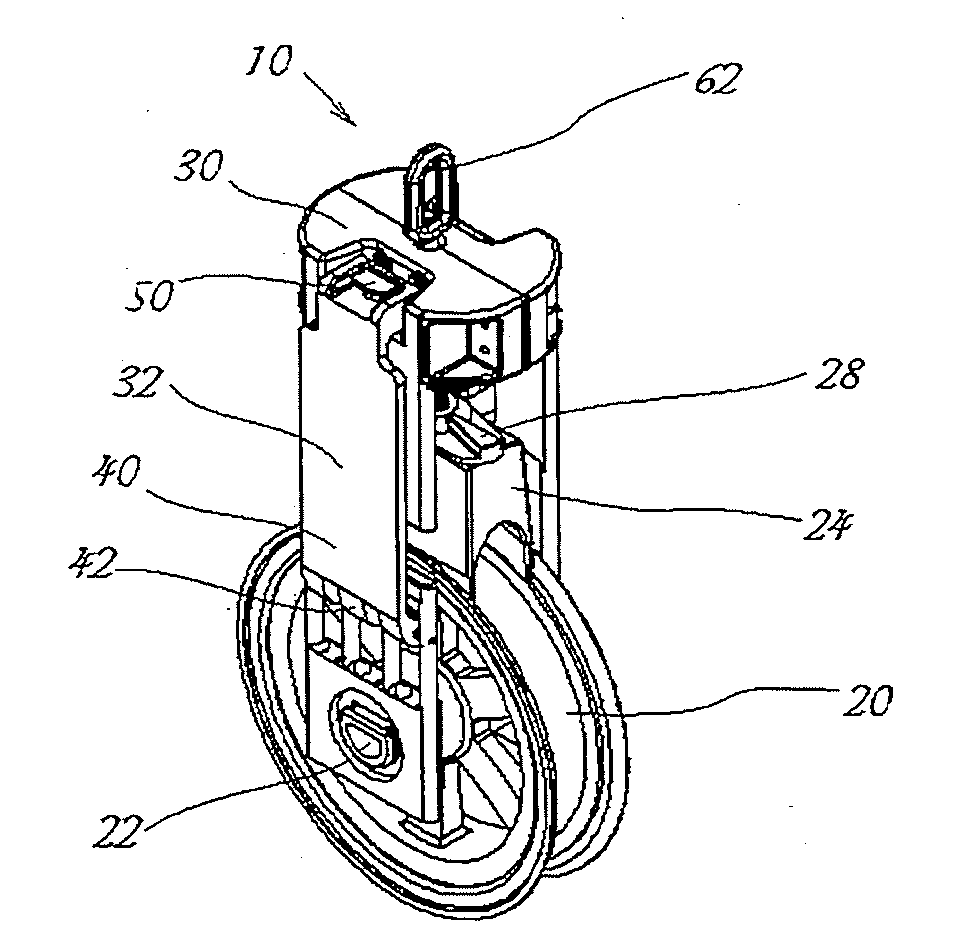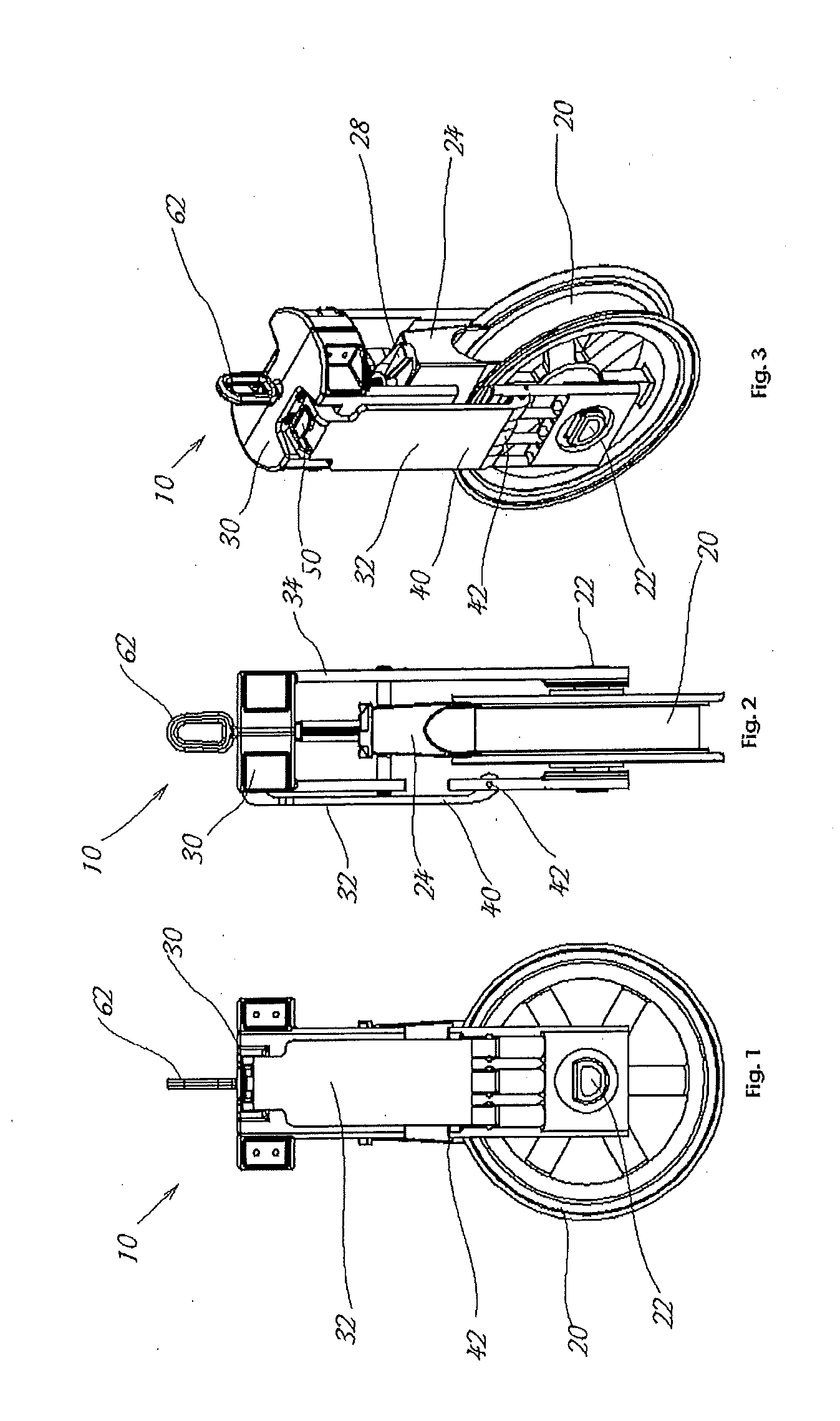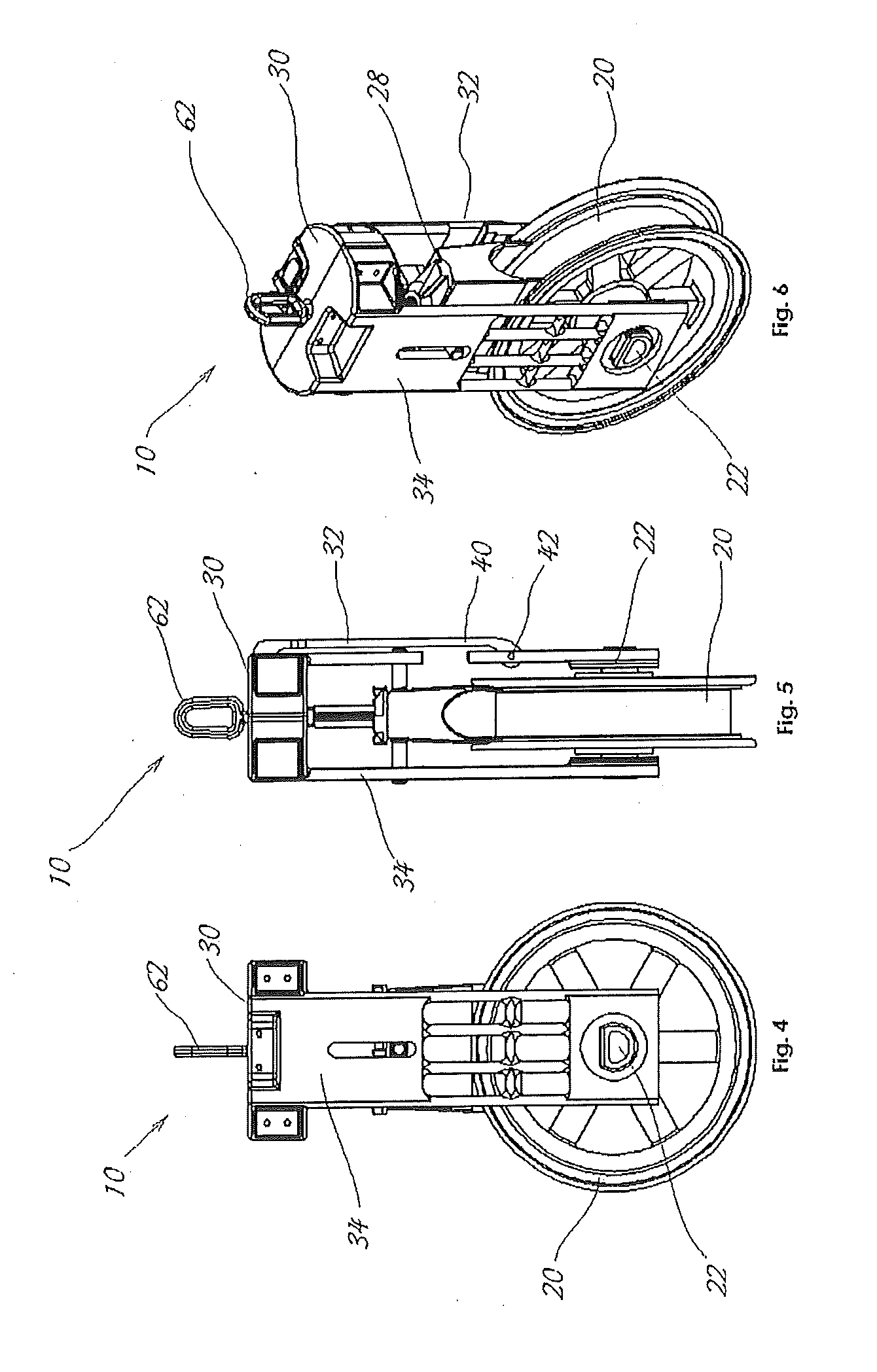Aerial sheave device
a technology of sheaving device and sheaving cable, which is applied in the direction of machine supports, instruments, other domestic objects, etc., can solve the problems of exacerbated cable suspension task, laborious installation task, etc., and achieves the effect of reducing stress, pressure and force, facilitating and improving the process of cable suspension
- Summary
- Abstract
- Description
- Claims
- Application Information
AI Technical Summary
Benefits of technology
Problems solved by technology
Method used
Image
Examples
Embodiment Construction
[0050]The present discussion is a description of exemplary embodiments only and is not intended as limiting the broader aspects of the present invention. The following example is provided to further illustrate the invention and is not to be construed to unduly limit the scope of the invention.
[0051]Referring to the drawings wherein identical reference numerals denote the same elements throughout the various views, FIGS. 1-10 are directed to an embodiment of the sheave 10 having a pulley wheel 20 that rotates on an axle 22. The wheel 20 is circular and has a generally “U” shaped profile that cradles a cable 90 that operates on the wheel 20 as shown in the environmental views of FIGS. 22 and 23. The axle 22 is attached to a frame that has a top side 30, a latch side 32, and a rigid side 34. A cable guard 24 is also attached to the frame and the cable guard 24 has a generally inverted “U” shape that coordinates with the “U” shape of the wheel 20. The way in which the “U” shape of the w...
PUM
 Login to View More
Login to View More Abstract
Description
Claims
Application Information
 Login to View More
Login to View More - R&D
- Intellectual Property
- Life Sciences
- Materials
- Tech Scout
- Unparalleled Data Quality
- Higher Quality Content
- 60% Fewer Hallucinations
Browse by: Latest US Patents, China's latest patents, Technical Efficacy Thesaurus, Application Domain, Technology Topic, Popular Technical Reports.
© 2025 PatSnap. All rights reserved.Legal|Privacy policy|Modern Slavery Act Transparency Statement|Sitemap|About US| Contact US: help@patsnap.com



